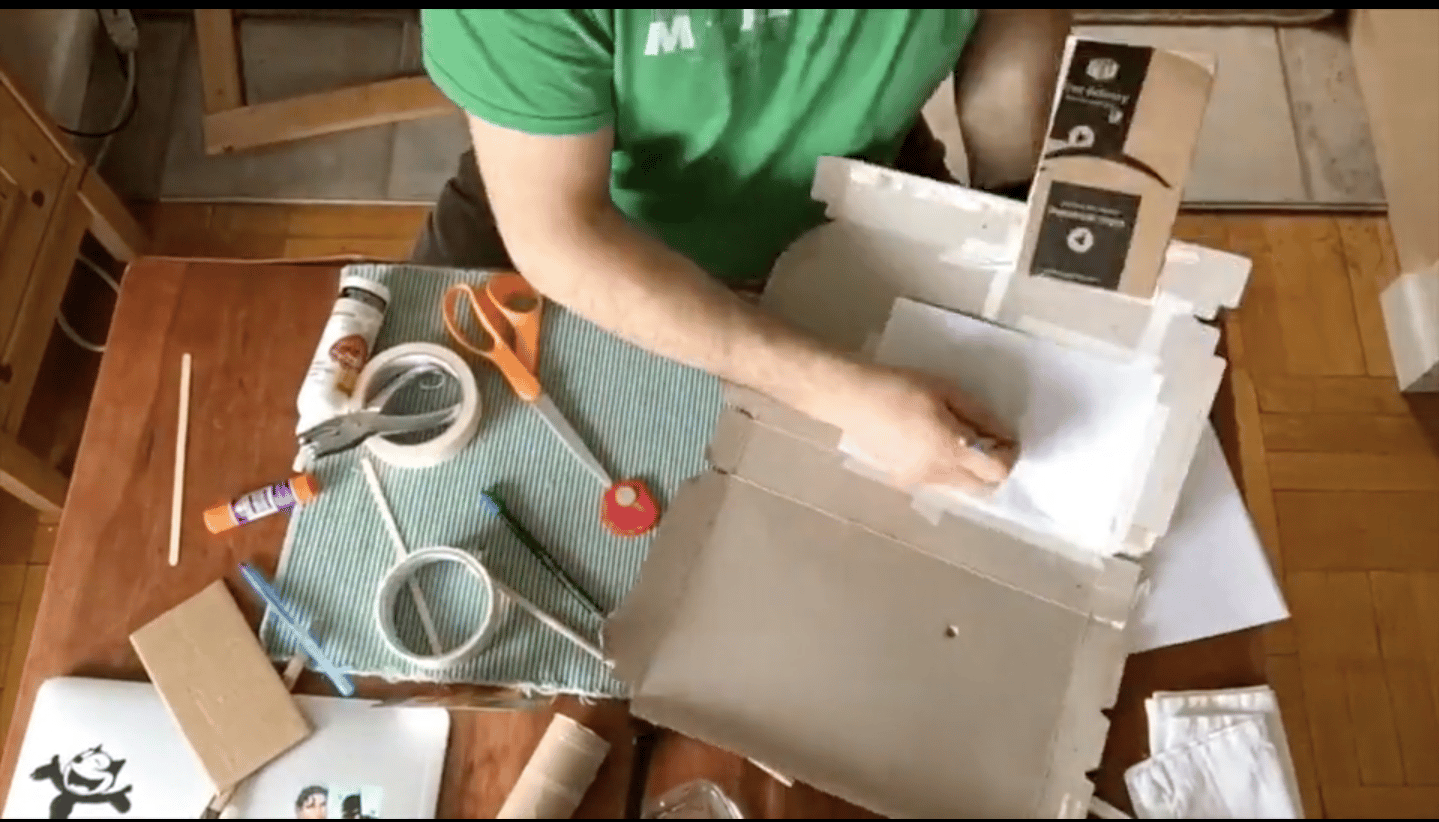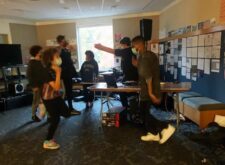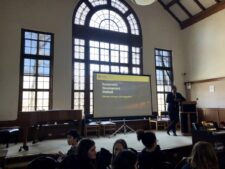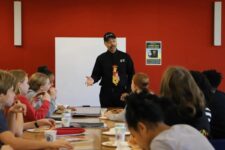Moving to a remote learning environment has challenged both teachers and students to be flexible, resourceful, and creative. For John Baglio, Fieldston Middle Engineering Teacher, and his 7th and 8th Grade engineering students, this just meant business as usual. Baglio’s students were familiar with creative problem solving, and their first assignment in remote learning put their skills to the test: Students were tasked with building a functioning contraption using only found objects in their homes.
“It will be good to jumpstart your mind, be creative, and do something hands-on, even though we’re not in the Design Studio,” Baglio told his students.
Students scavenged their homes, collecting empty cereal boxes, paper towel tubes, plastic bottles, and any other normally-discarded materials. They then used those items to create something — any functional device they could think of. A few students were inspired by the ongoing COVID-19 pandemic: Samuel W. ’24 built a bottle of soap that squirts ink onto your hand — ensuring that you wash your hands long enough to remove the ink, and therefore also remove any and all germs. Daniel B. ’25 created a new game — racing a model airplane suspended on a string — to play with his siblings while they’re at home.
It will be good to jumpstart your mind, be creative, and do something hands-on, even though we’re not in the Design Studio.
The assignment allowed students “to head away from their screens” — where most of their remote learning takes place — “and into the junk drawers and recycling bins of their homes to find inspiration in what they had,” says Baglio.
The remote learning environment provided students with more time than usual to work on their projects, which Baglio saw as a benefit. They had time to tinker — to play around with different designs and ideas — which is one of the core methods Baglio teaches in his engineering classes. “I love the French word bricolage for this type of behavior: tinkering, playing, and creating with what is already around to make something new, useful, and potentially beautiful.”
After completing their contraptions, students recorded videos of themselves demonstrating their devices and explaining how they came up with their ideas. Students were also asked to share a challenge they overcame and something during the process that made them smile. For Ellie U. ’25, her challenge was to make her pencil holder look more visually appealing, which she did by adding flowers to it. Her smile came when she video-chatted with a few classmates and they worked on their projects together.
Looking forward, Baglio is finding new ways to engage his engineering students with more hands-on projects. They’ll continue to use their innovative approach to take on the challenge of remote learning, using the skills and knowledge they’ve been learning all year long.
Check out the video below, which features contraptions from Daniel B. ’25, Gregory B. ’25, Ariana S. ’25, Ellie U. ’25, Samuel W. ’24, and John Baglio.



